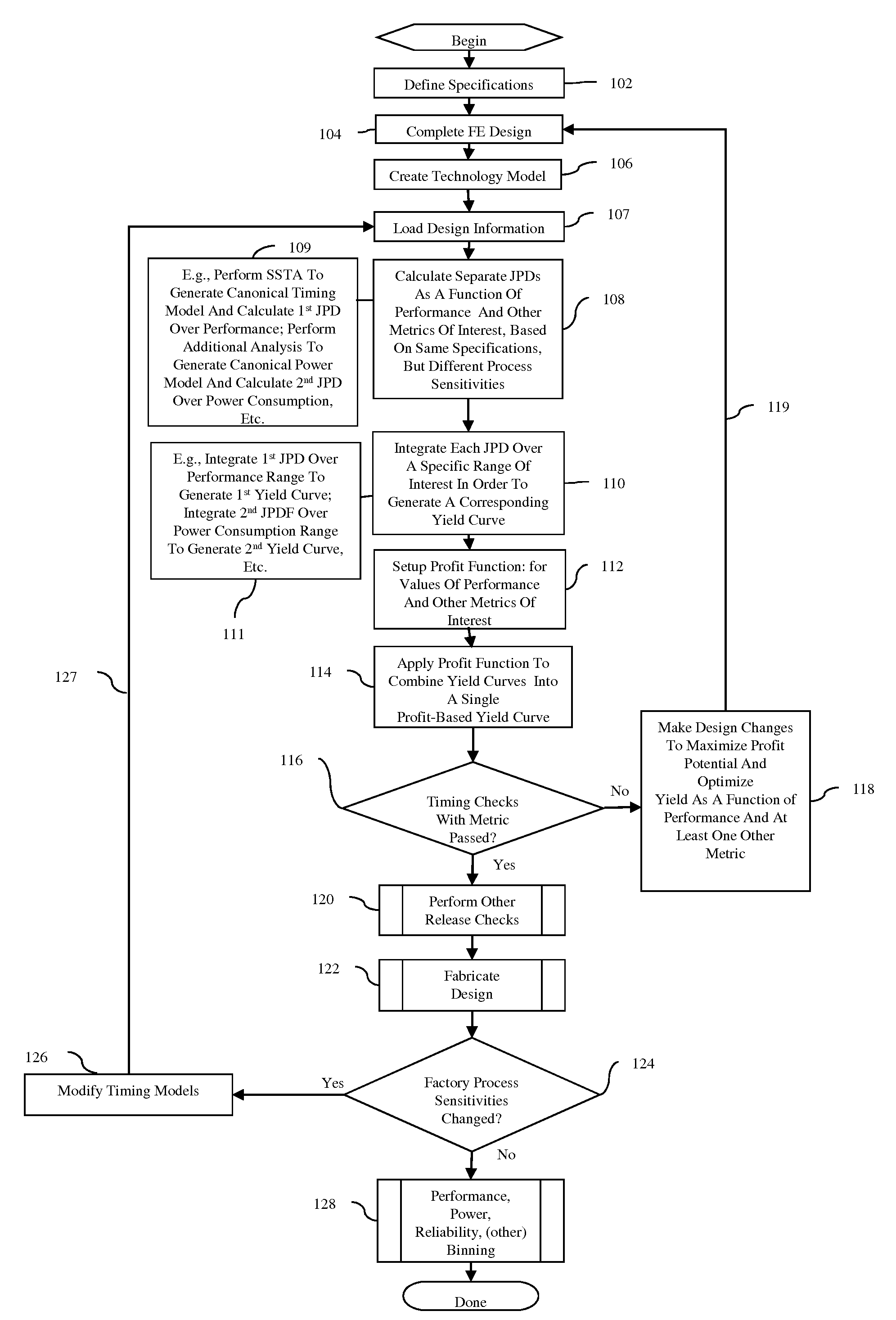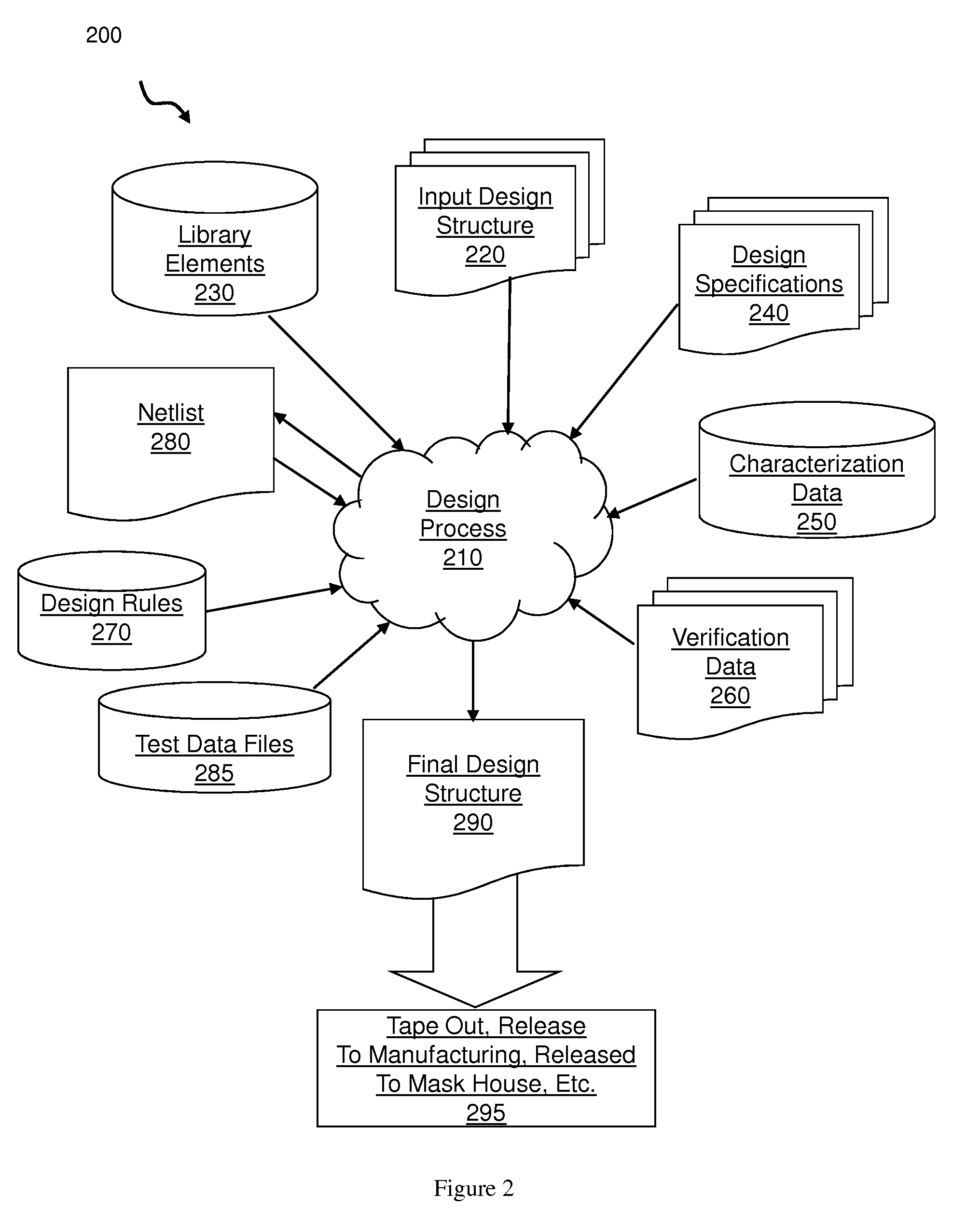Chip design and fabrication method optimized for profit
a chip design and profit technology, applied in the field of chip design and fabrication, can solve the problems of cost-effective design changes required to optimize yield as a function of any metric, reduce yield as a function of another metric, etc., and achieve the effect of optimizing yield and maximizing profit potential
- Summary
- Abstract
- Description
- Claims
- Application Information
AI Technical Summary
Benefits of technology
Problems solved by technology
Method used
Image
Examples
Embodiment Construction
[0022]The embodiments of the invention and the various features and advantageous details thereof are explained more fully with reference to the non-limiting embodiments that are illustrated in the accompanying drawings and detailed in the following description.
[0023]As discussed above, in conventional chip design and fabrication, Statistical Static Timing Analysis (SSTA) can be used to determine the parametric yield of a designed chip as a function of chip performance (i.e., the fraction or percentage of chips that are able to be manufactured and that can achieve pre-defined performance limits, such as clock frequency limits). To accomplish this, the dependence of chip performance on multiple different process parameter variations can be analyzed and a joint probability distribution function can be computed. From this a yield curve as a function of performance restrictions can be generated by integrating the joint probability distribution function over an operating range of interest...
PUM
 Login to View More
Login to View More Abstract
Description
Claims
Application Information
 Login to View More
Login to View More - R&D
- Intellectual Property
- Life Sciences
- Materials
- Tech Scout
- Unparalleled Data Quality
- Higher Quality Content
- 60% Fewer Hallucinations
Browse by: Latest US Patents, China's latest patents, Technical Efficacy Thesaurus, Application Domain, Technology Topic, Popular Technical Reports.
© 2025 PatSnap. All rights reserved.Legal|Privacy policy|Modern Slavery Act Transparency Statement|Sitemap|About US| Contact US: help@patsnap.com



